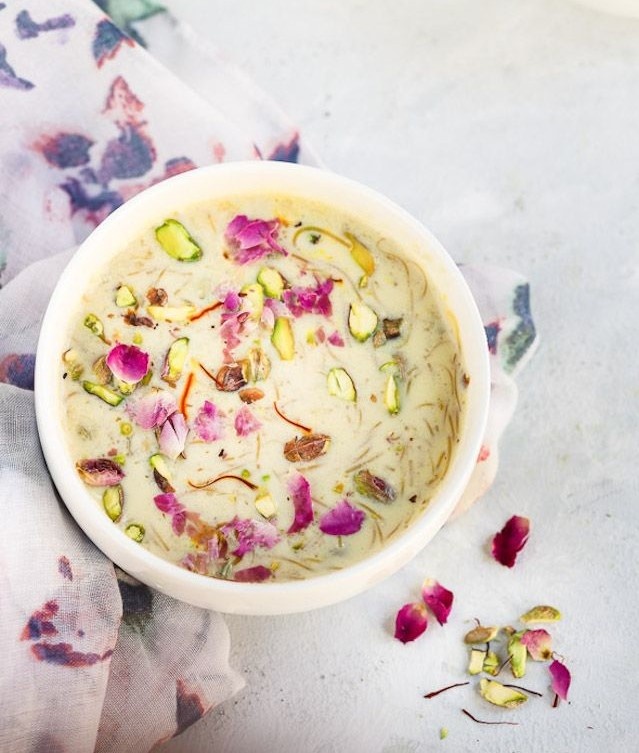
Kerala Wedding Sadhya: A Sumptuous and an Elaborate Feast of Sorts
A traditional wedding in Kerala is an intimate affair that generally takes place in the morning with simple rituals and a short ceremony that ends by lunchtime. While it is refreshing to be part of a quick wedding ceremony, it is the Sadhya the guests really look forward to! The newly-weds along with their family and friends sit down to eat a delicious and festive wedding Sadhya.
A typical Kerala Sadhya is a grand orchestration of 20-23 flavoursome local dishes. Served left to right on a banana leaf, the top half consists of accompaniments while the bottom half makes up the staples and mains. Tradition insists that the tapering end of the leaf points to the left of the seated guest. Not just at weddings, such a spread is served on landmark birthdays, Vishu and Onam. It is elaborate and hence, requires an audience to be really enjoyed.
In olden times, Sadhya preparation was considered as a community event where all the neighbouring homes came together to prepare the dishes. Depending on the number of dishes to be prepared and for how many people, the preparations would accordingly begin 1-2 days before. Nowadays, the wedding cooks and caterers need to tackle the challenge of preparing these dishes and serving hungry guests.

Puli Inchi (Image Source: Archana’s Kitchen)
Starting out with pickles, you will be presented two delicious options – a raw mango pickle flavoured with red chilli powder and mustard seeds, and the famous Puli Inchi, a hot and sweet concoction made using ginger, jaggery and green chillies. Next in line are the plantain (or banana) chips. The mildly spicy flavour is a result these chips being flavoured with ginger powder, cumin, turmeric, chilli powder and tossed in jaggery syrup. For a crunchy element, there are the Kerala pappadums which are made with rice flour and lentils and deep-fried in a generous amount of coconut oil.
Next, a spoonful of Thoran will be placed on the banana leaf. It is a simple preparation comprising or cabbage or beans stir-fried with grated coconut, mustard seeds, curry leaves and turmeric. Unlike the Tamilian Poriyal, Thoran uses copious amounts of grated coconut. A personal favourite on the wedding spread, Kalan is the next dish to be served. Yam is the most common tuber used for Kalan which is cooked in yoghurt, fenugreek, turmeric powder, red chilli powder, black pepper, curry leaves and ghee.

Avial (Image Source: Cooking Curries)
The mildly-flavoured Olan is served next. It is generally made with ash gourd or pumpkin with black-eyed beans simmered in thick coconut milk. Olan’s flavours can remind you that of Kerala stew. In some parts of Kerala, Olan is replaced by Stew and served with Appams. In southern parts of Kerala, you will get to enjoy More Kootan – similar to Tamil Nadu’s Kuzhambu. Perhaps the most renowned dish of the Sadhya is the Avial, next line after Olan. A melody of vegetables cooked in curd and ground coconut, seasoned with curry leaves and coconut oil – just the description can make your mouth water.
What you will notice is the entire spread features quite a number of vegetables and flavours catering to all your taste buds. Guests get to savour an amalgamation of incredible flavours and textures while enjoying the meal the traditional way. One of the gravies that is a part of the spread is Erissery which combines yellow pumpkins with fried coconut gravy. Another option is Kootu Curry, a mix of vegetables and chickpeas.

Kootu Curry (Image Source: The Spice Adventures)
Similar to raita but Kichadi and Pachadi are tempered with spices in coconut oil. Pachadi is grated coconut and yoghurt while Kichadi is just the yoghurt. Grated cucumber and thinly-sliced okras are added to this. The dish is also a great coolant for the body. Placed at the centre is Kerala’s par-boiled choru rice with the paruppu dal and a dollop of ghee. The first course served with rice is the Sambar. This dish holds such a high rank in the Sadhya that the quality of the meal is purely judged on how delicious is the Sambar. The difference between the Kerala Sambar and Tamil Brahmin Sambar is the former uses more of coconut. The Sambar is followed by the Rasam which is a tangy, peppery broth and finally concluded with spiced buttermilk, all of which is enjoyed with rice.

Sambar (Image Source: Pepper Delight)
Needless to say, every region of Kerala presents a set of regional dishes that get included in the wedding Sadhya. Hindu, Muslim and Christian influences do play a role in the harmony of flavours presented on the banana leaf. In some regions, meat and seafood is also a part of the spread so depending on which part of Kerala the couple is from, you may even get to feast on dishes like Meen Curry and Fish Pollichathu!
The spectacular feast ends with two incredible dessert – Pal Ada Pradhaman, milk slow-cooked with rice flakes in large wood-fired ovens and vessels, and Paruppu Payasam which is lentil cooked with milk and aromatics. The meal ends with sweet banana.

Payasam (Image Source: Feed Your Temptations)
If you ever get invited to a traditional Kerala wedding, don’t miss out on the opportunity because you’re in for a really delicious treat!










